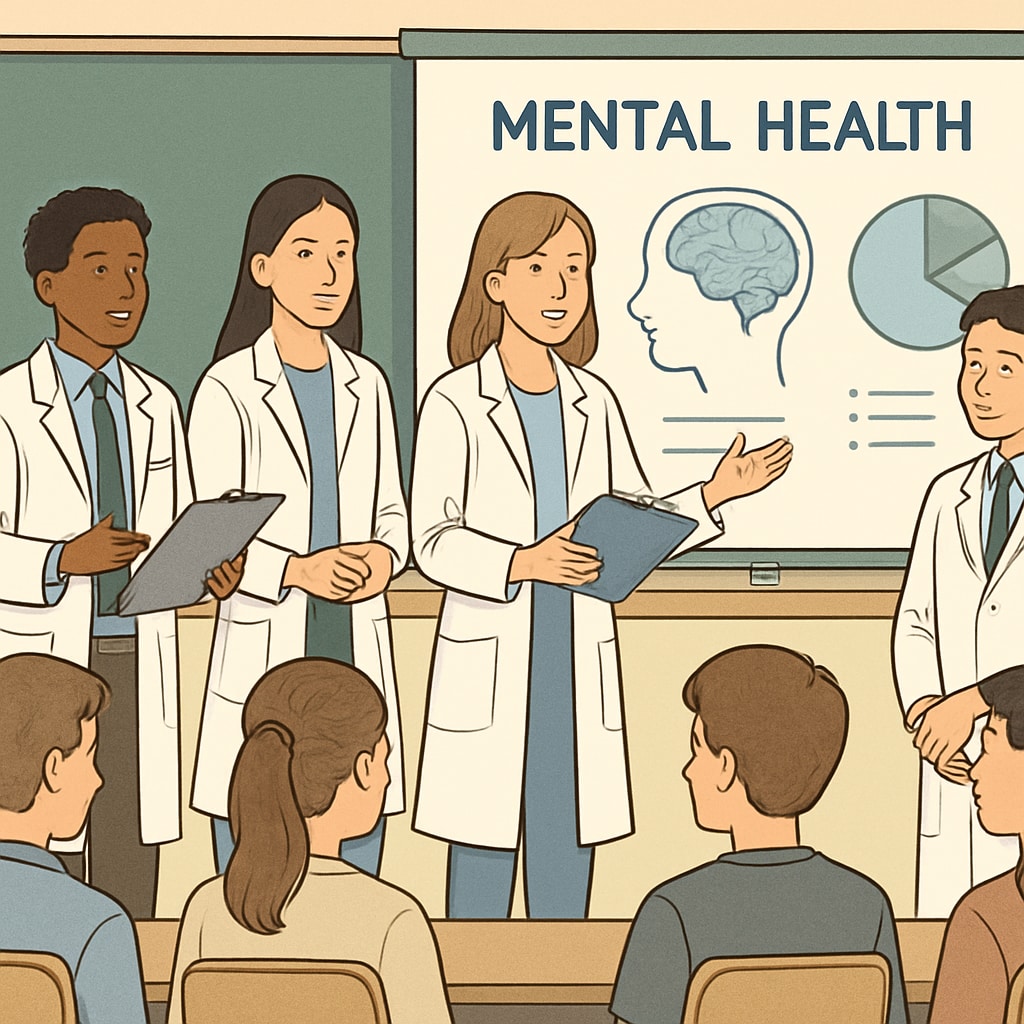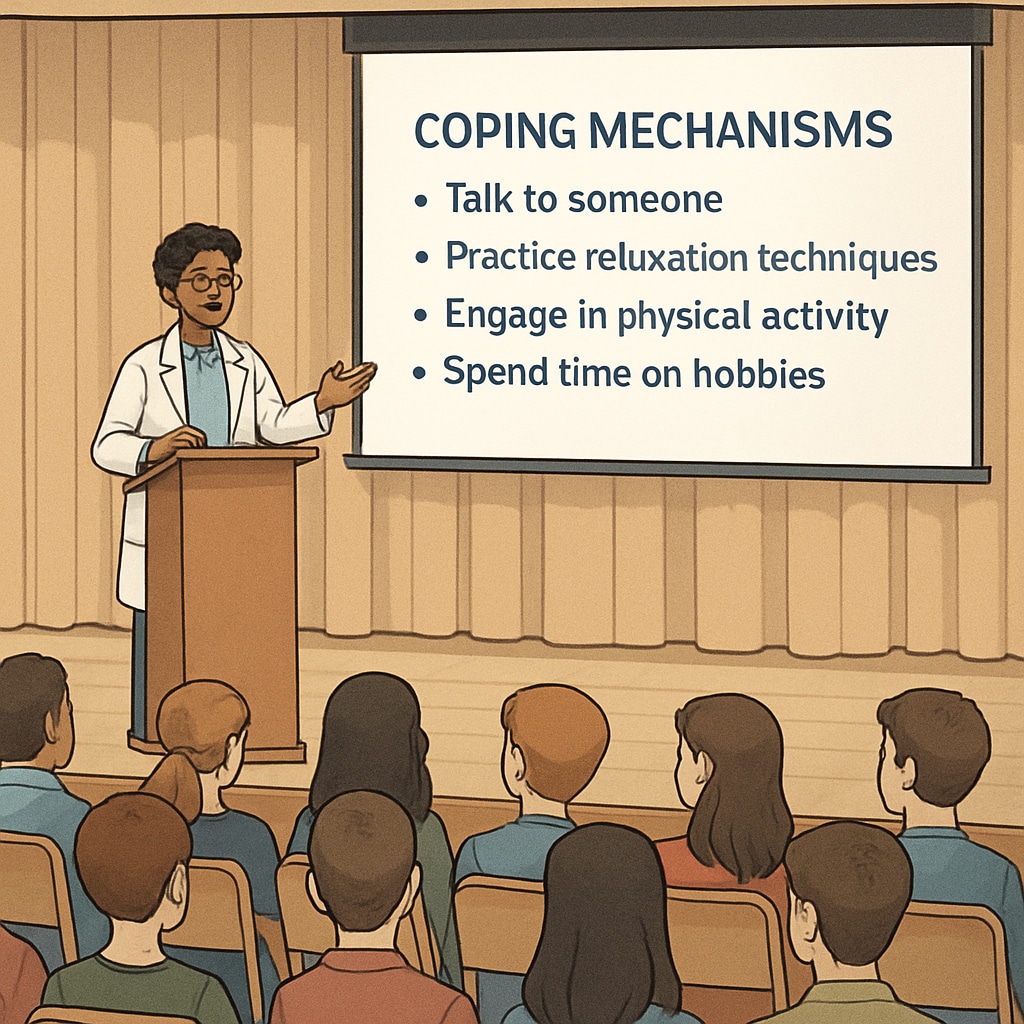Medical students, mental health, and high school assemblies are increasingly recognized as key components in addressing the growing challenges of youth psychological well-being. With mental health issues among teenagers on the rise, schools often face limitations in providing adequate resources and expertise. This article examines how medical students can bridge this gap by organizing mental health-focused assemblies in high schools, offering a unique blend of professional insight and peer relatability.

The Need for Mental Health Education in High Schools
High school students today are under immense pressure due to academic demands, social expectations, and digital influences. According to WHO data, one in seven adolescents experiences a mental health disorder globally. However, many schools lack the resources and expertise to adequately address these issues. This is where medical students can play a pivotal role, leveraging their background in healthcare to provide accurate, relatable, and impactful mental health education.
By organizing assemblies, medical students can address topics such as stress management, recognizing symptoms of depression and anxiety, and seeking help. These sessions not only educate but also reduce stigma around mental health, empowering students to take proactive steps in their own well-being.
Steps to Organizing a Successful Assembly
Implementing a mental health assembly requires careful planning and collaboration between medical students and high schools. Below is a step-by-step framework:
- Initial Contact: Medical students can reach out to school administrators, presenting their proposal and emphasizing the benefits of a mental health assembly.
- Needs Assessment: Conduct surveys or discussions with educators and students to identify key topics of concern, such as anxiety, bullying, or coping strategies.
- Content Design: Develop presentations that are age-appropriate, interactive, and evidence-based. Include real-life examples and practical advice to engage students effectively.
- Collaboration: Partner with school counselors, psychologists, and community organizations to ensure the information is comprehensive and localized.
- Execution: Schedule the assembly, ensuring it aligns with the school calendar, and promote the event through posters, social media, and announcements.
- Follow-Up: Provide resources such as pamphlets, contact information for mental health services, and post-event surveys to assess impact.

Benefits of Medical Students Leading Mental Health Initiatives
There are several advantages to involving medical students in high school mental health education:
- Expertise: Medical students bring credible knowledge and understanding of mental health topics, ensuring accurate dissemination of information.
- Relatability: As young adults, medical students can connect with high school students on a peer level, making discussions more engaging and approachable.
- Community Impact: This initiative fosters a sense of responsibility and leadership among medical students while benefiting the broader community.
For example, assemblies led by medical students at local high schools in Australia have shown significant improvements in students’ awareness of mental health issues and willingness to seek help (Beyond Blue).
Challenges and Solutions
While this approach holds great promise, challenges such as logistical coordination and funding may arise. To overcome these hurdles:
- Funding: Seek sponsorships from healthcare-related organizations or local businesses to cover materials and transportation costs.
- Scheduling Conflicts: Work closely with schools to find mutually convenient times for assemblies.
- Content Credibility: Ensure presentations are reviewed by licensed mental health professionals before execution.
By addressing these challenges, medical students can create a sustainable model for integrating mental health education into school systems.
Conclusion
Medical students have the potential to transform high school mental health education through innovative and impactful assemblies. By bridging the gap between healthcare and education, they can provide young people with the tools and knowledge to manage their mental well-being effectively. This approach not only benefits students but also fosters a culture of empathy and awareness within the community.
Therefore, initiatives like these should be encouraged and supported to ensure that mental health education becomes a key priority in schools worldwide.
Readability guidance: Use concise paragraphs, bullet points for lists, and avoid jargon to keep the content accessible. Ensure transitions between sections for smooth reading flow.


